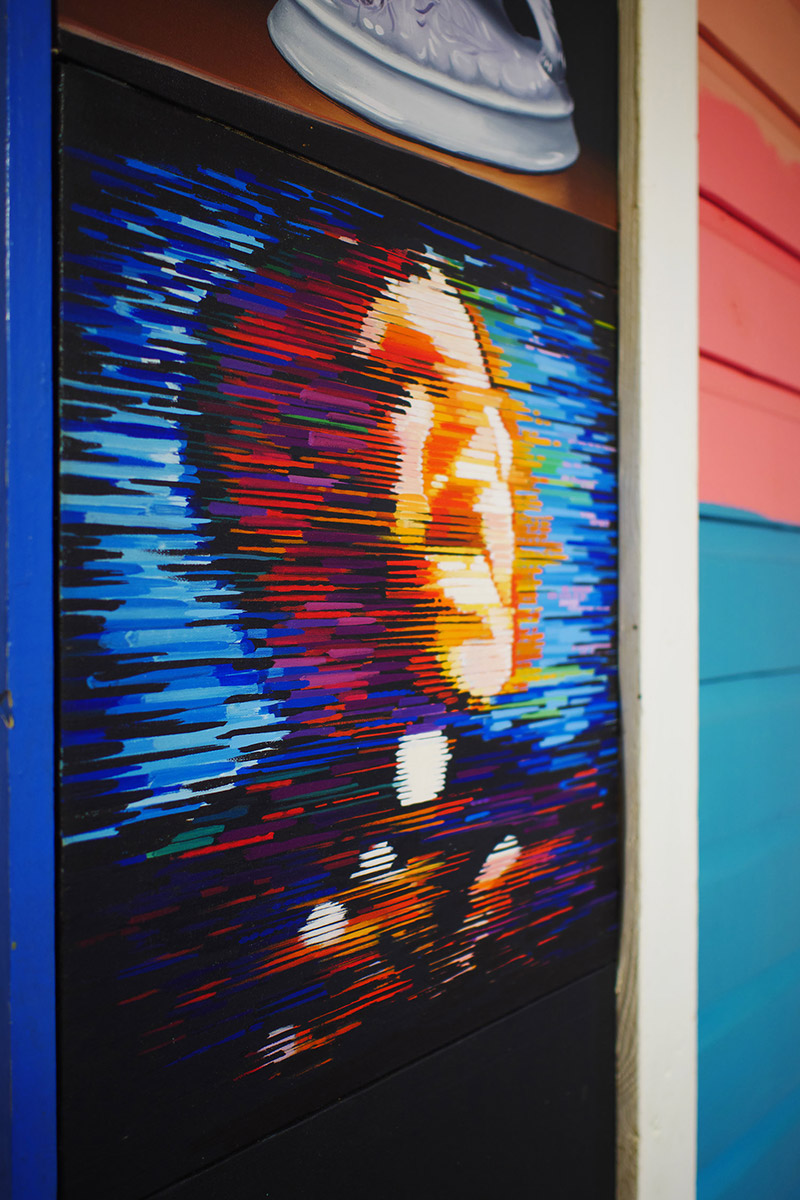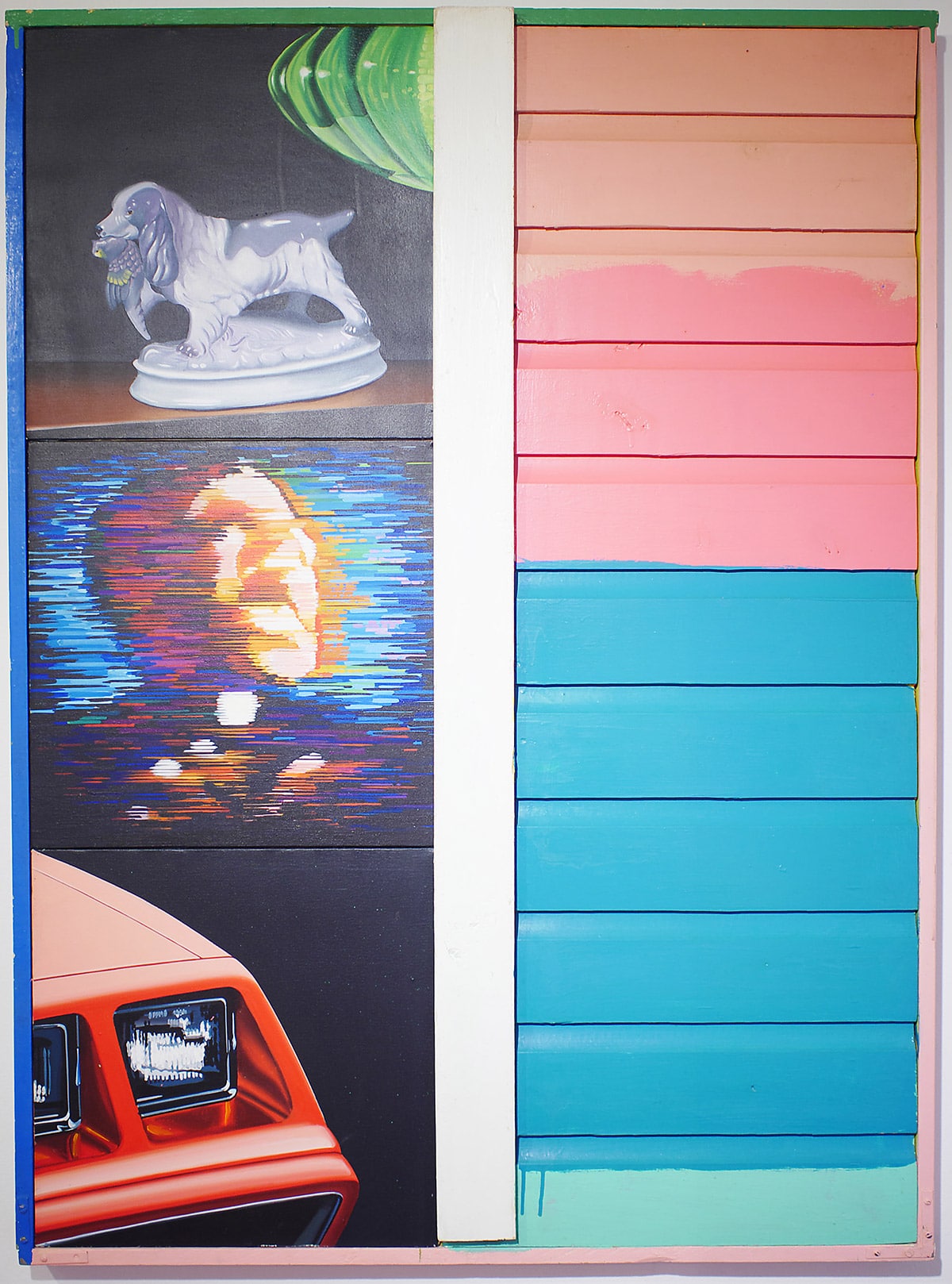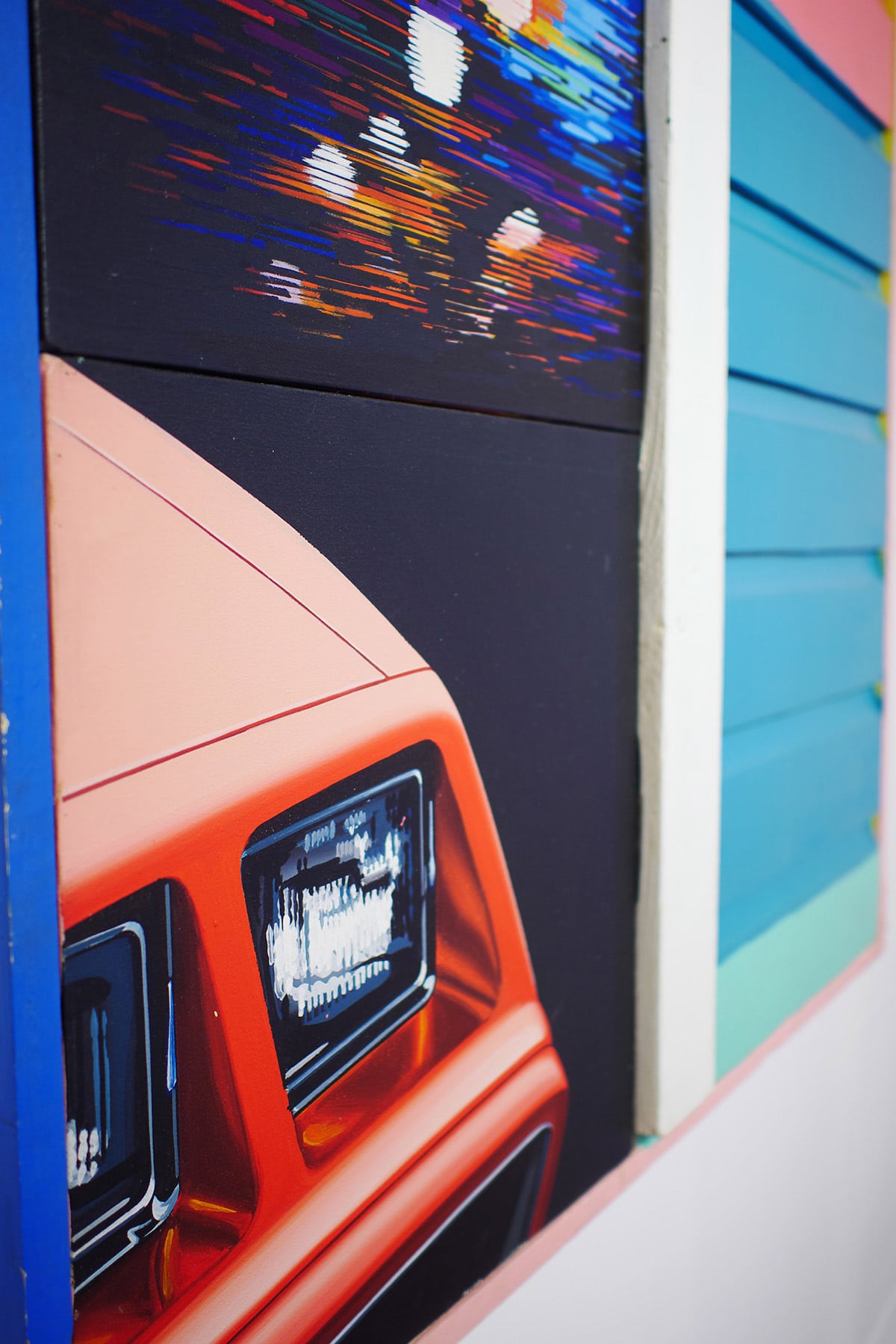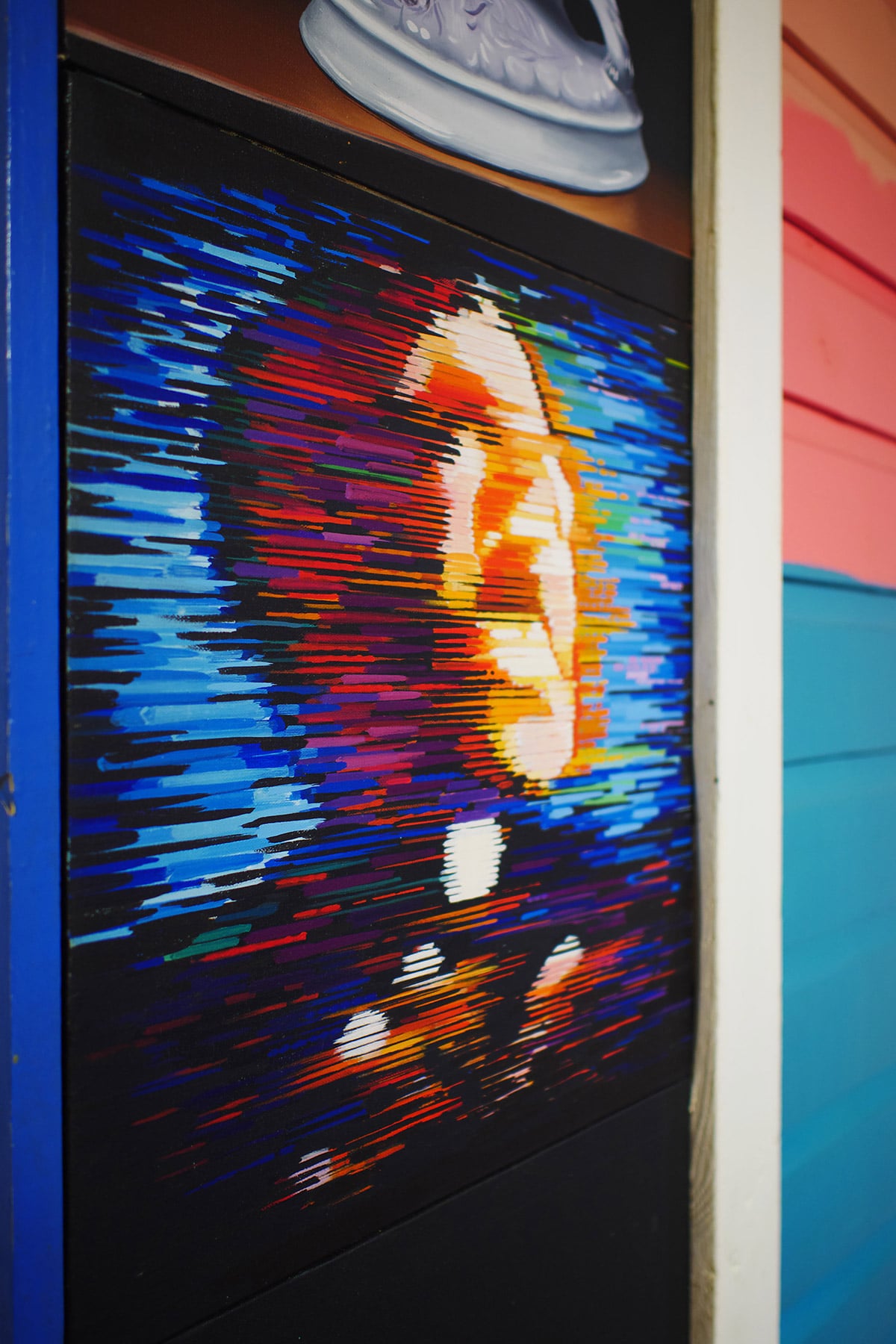
By Natalie Willis
The title is undoubtedly provocative given the Bahamian bent toward Christianity, but “Let Us Prey” (1984-86) is, quite literally, a gift. Donated by Dave Smith in 2007, the work is at once an act of good faith, while simultaneously critical of bad. It’s another painting from the National Collection that we have given some gentle care to and put on display for the current Permanent Exhibition, “Revisiting An Eye For The Tropics,” and fits into the theme of the Bahamian Everyday that works within this exhibition.
Dave Smith is a British artist who moved to The Bahamas and spent seventeen years here before moving to the US. Arriving on our shores as an abstract painter, he is now hailed as a home-grown Pop-realist, with Smith’s paintings depicting the Bahamian every day in the style of Pop Art. Art can become a way of knowing a place and Smith’s way of looking at our struggles and idiosyncrasies comes from a position of one who is simultaneously ‘inside’ and ‘outside.’. He no doubt has strong ties and feels at home here, but he is also from an entirely different cultural background to many of those living in these Bahamian scenes that he paints – this duality of being familiar with ‘The Bahamian,’ whilst concurrently holding his own Britishness gives his works a very particular perspective in viewing our society. Certain things seem curious, like the old cinema titles he so carefully renders in his work, but his attention to the minutiae of our lives are shown in such detail it can only be an act of care and consideration.

“Let Us Prey” (1984-86), Dave Smith, mixed media, 55 x 38. Part of The National Collection, gifted by the artist in 2007.
Smith captures the strange and sometimes the uncomfortable beauty of the place in which we live– outside of tourist ideals. Tacky figurines with strangely European scenes of dogs catching fowl hunted by humans, distorted TV screens, and shiny pink cars with headlights rendered meticulously– all this alongside hastily-painted but carefully crafted clapboard. It’s a snapshot of Bahamian life in a nutshell. Our obsession with the news, with strange customs and tendencies toward US and British culture, the love of cars and looking like you ‘have arrived,’ all against the backdrop of the classic clapboard house to root us again in our history, it’s all here in “Let Us Prey” (1984-86). By building the symbol of a home in the work, he is helping to visually build our world as we know it in the form of an artwork, an object up for consideration by us and, as such, he helps build the arsenal of images depicting Bahamian life.
The advent of Pop-Art after World War II marked a period of art investing itself in the mechanical production of the West as it rebuilt itself and a pointed move away from art being for ‘the elite.’ Art began to make use of the everyday and of ‘kitsch,’ thereby making itself a product of the people – and it was certainly a product, commenting on the consumerism of the art market by having work made largely by machines. It became less about the hallowed idea of the ‘original’ work of art and more about people, the quotidian and what we see on a daily basis. By moving away from the elitism around the ‘unique,’ it made itself no longer out of reach for our growing consumer populace. This is a genre that Dave Smith still finds himself in years later because it holds a certain relevance to us. It helps us to see ourselves and what surrounds us in an accessible way, in a way that we are familiar with.

Installation shot of “Let Us Prey” (1984-86) by Dave Smith as seen in the current Permanent Exhibition, “Revisiting An Eye For the Tropics”.
“Let Us Prey” (1984-86) sounds like a warning and a command in one and this simple play on words speaks volumes, chapters, tomes – just like the verses and books of ‘The Book’ that many of us read from on Sundays. The ironic play on words of ‘pray’ and ‘prey’ might cause some to bristle at the thought, but this is not the work of a heretic so much as a critique of how we have come to know ourselves and our sense of compassion. On the one side of this work, are the articulately detailed images of those things we find ourselves concerned with – and they all have to do with image and how we represent ourselves. Figurines and other material items with which we present our homes, the pastor screaming aloud on TV, and what looks like a shiny Cadillac below, are all symbols for how we value what image we put forth to the world. We show ourselves as proudly Christian and, as the clapboard on the right of the work might suggest, we do very differently behind the walls of our homes and within our hearts. If it is all for show and we are too caught up in material goods and appearances, then we truly have turned our ‘praying’ to ‘preying’ upon each other – as the only thing that can come out of keeping things up for appearances is to bring others down.
From the time of this work’s creation to now, we still turn on the TV to consume the horrors of the world, albeit told from our very specific perspectives and biases, but they are horrors nonetheless. The screaming face, genderless, and rendered in the scratchy lines of TV ‘back in the day’ would hold good competition with the iconic painting “The Scream,” by the Norwegian Expressionist painter Edvard Munch,,- which the advent of mechanical reproduction made available on everything from posters to mugs to tea-towels. Some might say, why shouldn’t it be? Whereas Munch and other Expressionists looked inwardly to provide visual displays of intense emotion, Pop Art had a more outward mission: to make art familiar and to collapse some of the perceived mystery or boundaries seemingly inherent in artwork.

Installation shot of “Let Us Prey” (1984-86) by Dave Smith as seen in the current Permanent Exhibition, “Revisiting An Eye For the Tropics”.
Works do not ever solely exist in the time they were made—the context is undoubtedly important and is part of the meat of the work—and meanings and significances accrue throughout time that can make work relevant and meaningful in the present. “Let Us Prey” (1984-86), viewed in the context of the citizenship and gender equality referendum, for example, can serve as a poignant reminder of how we ‘preyed’ upon those more disadvantaged than ourselves, how much of the debate around the referendum became a class war and a matter of, “How can you possibly think this way!?” from both sides, and how the church became once more tied up in state affairs.
Its relevance runs deep, and this is why these works have lives of their own that continue to add more to our own stories as Bahamians as much as it might add to their own as an artwork and as a lens through which to examine life.